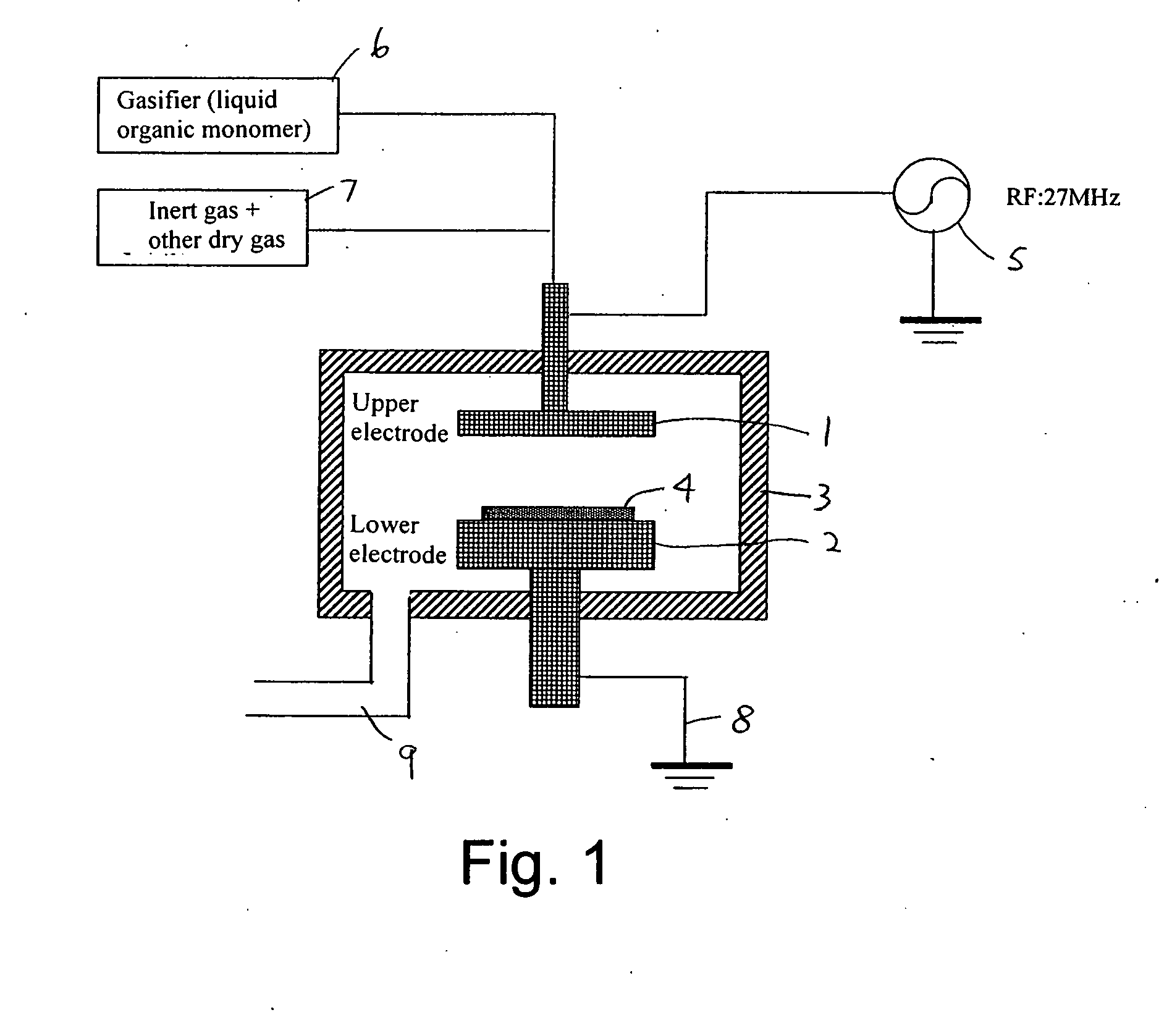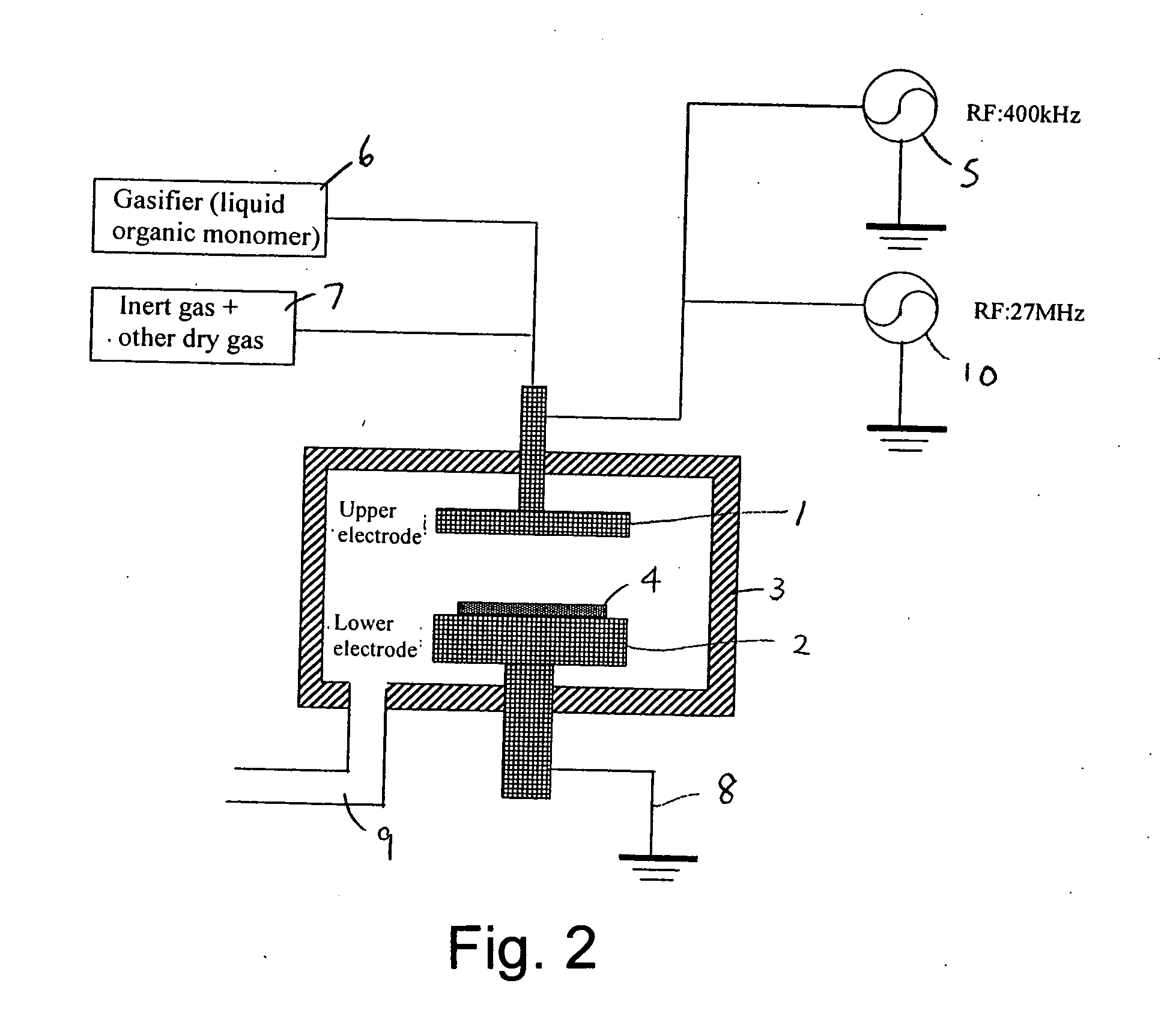Method of forming interconnection in semiconductor device
a technology of interconnection and semiconductor, applied in the direction of semiconductor/solid-state device manufacturing, basic electric elements, electric devices, etc., can solve the problems of excessive film thickness and stress change, difficult to solve, etc., and achieve the effect of suppressing the impact of uv curing, high uv absorption rate, and greater extinction coefficien
- Summary
- Abstract
- Description
- Claims
- Application Information
AI Technical Summary
Benefits of technology
Problems solved by technology
Method used
Image
Examples
examples
[0076] Examples of the present invention are shown below. The present invention, however, is not limited to these.
[0077] Process and Irradiation Conditions
[0078] First, using an apparatus shown in FIG. 1, a low-k film 61 was formed with a thickness of approximately 500 nm on a silicon substrate 61 (300 mm in diameter) using 1,3-dimethoxy-tetramethyldisiloxane (DMOTMDS) as a source gas (FIG. 6A). Additionally, film formation conditions were as follows: 200 scm of DMOTMDS, 100 sccm of O2, 200 sccm of He, RF power of 27.12 MHz at 2.5 W / cm2, a substrate temperature of 360° C. and a pressure of 665 Pa. Next, using the apparatus shown in FIG. 3, UV light was irradiated to the substrate under the conditions described below to reform the low-k film 61 and a reformed low-k film 61′ was obtained (FIG. 6B).
[0079] Processing time: 60 sec.
[0080] UV wavelength: 172 nm
[0081] Irradiation intensity: 10 mW / cm2
[0082] N2: 4,000 sccm
[0083] Pressure: 50 Torr
[0084] Heater temperature: 430° C.
[008...
PUM
| Property | Measurement | Unit |
|---|---|---|
| thickness | aaaaa | aaaaa |
| thickness | aaaaa | aaaaa |
| wavelength | aaaaa | aaaaa |
Abstract
Description
Claims
Application Information
 Login to View More
Login to View More - R&D
- Intellectual Property
- Life Sciences
- Materials
- Tech Scout
- Unparalleled Data Quality
- Higher Quality Content
- 60% Fewer Hallucinations
Browse by: Latest US Patents, China's latest patents, Technical Efficacy Thesaurus, Application Domain, Technology Topic, Popular Technical Reports.
© 2025 PatSnap. All rights reserved.Legal|Privacy policy|Modern Slavery Act Transparency Statement|Sitemap|About US| Contact US: help@patsnap.com



